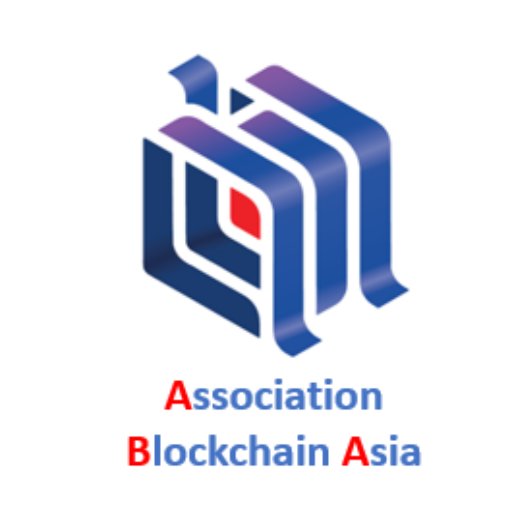The future of work: AI, automation, and the role of blockchain in remote jobs

How decentralisation and AI will impact digital workspaces
The shift towards a decentralised workforce
Remote work isn’t a temporary trend – it’s the future. Over the past decade, the way we work has fundamentally changed, with AI, automation, and blockchain driving a shift toward digital, decentralised, and autonomous workspaces.
Major companies like GitLab, Automattic (WordPress), and Zapier have already embraced fully remote and AI-augmented work environments. Similarly, startups and enterprises alike are experimenting with blockchain-powered smart contracts, decentralised autonomous organisations (DAOs), and web3-native work structures.
At People’s Inc. 360, we practice a gig economy model where tasks are dynamically assigned through an internal AI-powered system – similar to how Upwork, Deel, and Fiverr structure freelance work. Seraphina AI, our in-house automation tool, takes hyper-personalisation to the next level, but it’s just one example in a growing industry where AI-powered work management is becoming the norm.
So, what does this mean for the future of work? Let’s break it down.
AI and automation: The backbone of future work

AI is no longer just a tool – it’s becoming a co-pilot for employees, automating repetitive tasks and enhancing productivity across industries.
How AI is transforming work today
- AI-driven productivity tools: Platforms like Notion AI, ClickUp AI, and Microsoft Copilot are helping workers manage tasks, automate documentation, and streamline workflows.
- Generative AI in creative industries: ChatGPT, Jasper, MidJourney, and Artflow are revolutionising content creation, marketing, and design, allowing creatives to work faster and smarter.
- AI-powered hiring and HR: Recruitee, HireVue, and Pymetrics use AI-driven hiring models to identify the best candidates based on skill matching and behavioral data.
Case study: People’s Inc. 360 and Seraphina AI in task-based workflows
At People’s Inc. 360, we’ve adopted a task-based work model where AI dynamically assigns tasks based on real-time needs and employee expertise. This is similar to what companies like Deel and Remote.com are doing by leveraging automation to match talent with the right opportunities.
Seraphina AI takes it a step further by personalising work allocations, ensuring that employees receive tasks suited to their past performance, skills, and preferences. However, this isn’t unique to us – companies like Airtable and Zapier are building similar AI-powered workflow automations for businesses globally.
While AI optimizes efficiency, the human element remains essential in decision-making, creativity, and strategic planning. But what about blockchain’s role in all this?
Blockchain’s role in remote jobs and digital workspaces
Blockchain technology is revolutionizing contracts, payments, and identity verification, addressing key challenges faced by freelancers, remote workers, and digital nomads.
Key innovations in blockchain-powered work
- Smart Contracts: Platforms like Ethereum, NEAR Protocol, and Aragon enable automated, self-executing contracts, removing the need for intermediaries in freelance work agreements.
- Decentralised Employment Models (DAOs): Organisations like MakerDAO, Gitcoin, and Bankless DAO operate without traditional corporate hierarchies, allowing members to vote on projects and payments in a transparent, trustless way.
- On-Chain Credentials: Projects like Learning Machine, Blockcerts, and OpenCerts enable blockchain-verified resumes, preventing credential fraud and making job applications more efficient.
Case study: Seraphina AI meets blockchain
At People’s Inc. 360, we’re exploring ways to integrate blockchain-powered smart contracts into our gig-based work structure – similar to how platforms like Braintrust and WorkDAO are using tokenised incentives and on-chain governance for hiring and compensation.
Imagine a freelancer completing a gig and getting paid instantly via a smart contract – no invoicing, no disputes, just seamless blockchain-enabled payments. That’s the future we’re heading toward.
The rise of web3 workforces and the gig economy
The gig economy is thriving, and web3 is redefining how independent workers engage with employers. Instead of relying on centralised job marketplaces like Upwork or Fiverr, web3-based job platforms offer more control and financial independence.
How companies are embracing the web3 gig economy
- Decentralised Talent Marketplaces: Platforms like Braintrust and Kleros allow workers to take ownership of their contributions and earnings without intermediaries.
- Tokenised Payment Structures: Some companies now pay employees in crypto, with organisations like Sablier and Superfluid enabling real-time payroll on blockchain.
- Remote-First DAOs: Groups like LexDAO and Raid Guild operate as remote-first web3 workforces, proving that decentralised employment models aren’t just theoretical – they’re working today.
Case study: People’s Inc. 360 and the evolution of gig-based work
At People’s Inc. 360, we’ve seen firsthand how a task-based, gig-style workflow creates efficiency and flexibility. But this approach isn’t limited to us – enterprises like Uber, DoorDash, and TaskRabbit have proven that gig work is a scalable model.
With web3, the gig economy is becoming more decentralised and worker-owned, allowing freelancers to retain more control over their work and earnings.
Challenges in AI, blockchain, and the future of work
Of course, integrating AI and blockchain into workspaces isn’t without challenges:
- Ethical AI considerations: AI-powered hiring tools like HireVue have faced criticism for algorithmic bias. Ethical AI development is crucial.
- Regulatory uncertainty: Governments are still figuring out how to regulate AI-driven hiring and decentralised autonomous organisations.
- Security and fraud risks: Blockchain-based work agreements require strong security measures to prevent fraud, hacks, and identity theft.
Leading organisations, including Microsoft, IBM, and ConsenSys, are actively working on solutions to regulate and optimise these new technologies for the workplace.
The road ahead: How businesses and individuals can prepare
For individuals
- ✅ Learn AI skills – platforms like Coursera, Udemy, AI21 Labs, my Nas.io community, etc. offer great resources.
- ✅ Familiarise yourself with blockchain – Metamask, OpenSea, and Lens Protocol are good starting points.
- ✅ Adapt to gig-based and remote work models – Deel, Remote.com, and Oyster provide valuable job-matching tools.
For businesses
- ✅ Invest in AI-driven productivity tools like Notion AI and ChatGPT.
- ✅ Explore blockchain-based payments to streamline freelancer contracts.
- ✅ Build a remote-first culture that supports AI-human collaboration.
The new digital work paradigm

The future of work isn’t just about automation – it’s about empowerment. AI, blockchain, and web3 are enabling a more flexible, efficient, and fair work environment.
While People’s Inc. 360 and Seraphina AI are just one example, countless companies are already experimenting with these technologies. The organisations that embrace these shifts will thrive – and those that resist may struggle to keep up.
Decentralisation, AI, and automation aren’t eliminating jobs – they’re creating new ways to work. The question is: Are you ready for the shift?







Responses